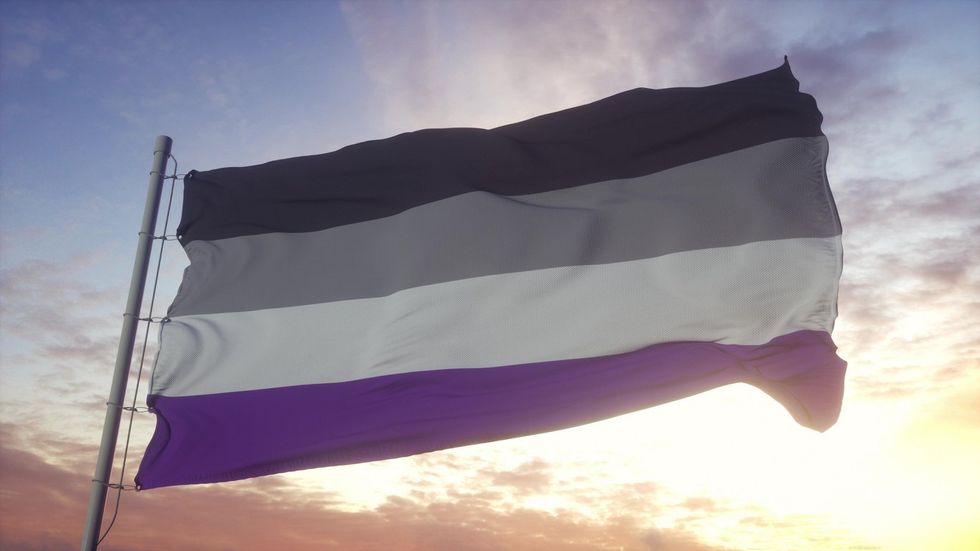
Emily Jamea, Ph.D., is a intercourse therapist, USA As we speak Greatest-Promoting creator and podcast host. You could find her right here every month to share her newest ideas about intercourse.
As a intercourse and relationship therapist, I’ve made it my mission to assist individuals really feel safe and assured of their sexuality. More often than not, I work with individuals to spice up need, treatment sexual dysfunction, overcome sexual inhibition or calm compulsive sexual urges.
However generally I work with individuals to assist them really feel safe and assured concerning the absence of their sexual emotions — a sexual orientation known as asexuality.
In a world hyperfocused on romance, need and sexual connection, asexuality is commonly ignored. However, it’s as legitimate as every other sexual orientation. Roughly 1% of the inhabitants identifies as asexual. And percentages are barely increased within the queer neighborhood, in youthful adults and amongst these on the autism spectrum.
By shedding mild on this typically misunderstood sexual orientation, we will higher perceive not solely those that establish as asexual but additionally the infinite nuances of intimacy, connection and love.
What’s asexuality?
Asexuality is a sexual orientation the place you’ve gotten little to no sexual attraction to others. This doesn’t suggest that asexual individuals cannot expertise love, intimacy or connection. It additionally does not imply that they are celibate by selection or wish to keep away from romantic relationships altogether.
Asexuality exists on a spectrum, also known as the “ace spectrum,” which incorporates several types of attraction, need and relationship preferences. Some asexual individuals establish as aromantic, that means they don’t expertise romantic love, whereas others would possibly type deep romantic connections although they do not really feel sexual attraction.
People who find themselves “graysexual” could expertise occasional or situational sexual attraction, whereas “demisexuals” require a powerful emotional bond earlier than feeling sexual need.
Whereas some individuals could really feel crystal clear about being asexual, others could discover themselves questioning if and the place they fall on the spectrum.
Am I asexual?
If you happen to’re questioning in case you could also be asexual, working with a talented therapist and utilizing assessments just like the Asexuality Identification Scale take a look at may also help shed some mild in your orientation.
Myths about asexuality
There are quite a lot of misconceptions about asexuality. One widespread delusion is that asexual persons are repressed, traumatized or ‘ready for the proper particular person.” This misunderstanding diminishes the legitimacy of asexuality as a sexual orientation and retains dangerous stereotypes going. Being asexual just isn’t the identical factor as being celibate, sexually inexperienced or tired of relationships.
One other widespread delusion is that asexual individuals can’t have fulfilling relationships. In reality, many asexual individuals construct deeply satisfying connections, whether or not they’re romantic, platonic or someplace in between. Like anybody else, asexual individuals could search companionship, emotional intimacy and shared life experiences. Some could even have interaction in sexual exercise as an expression of affection or a mutual settlement with a associate regardless of not experiencing sexual need themselves.
Learn: Good Intercourse with Emily Jamea: The Paradox of Need >>
It’s vital to keep in mind that most elements of sexuality are fluid. Which means that some individuals could really feel like their sexual orientation, gender identification and preferences change with time. Some individuals could really feel like they fluctuate between feeling heterosexual, bisexual, homosexual and even asexual all through durations of their life.
Navigating relationships as an asexual particular person
A standard query about asexuality is the way it influences relationships. All wholesome relationships start with honesty and communication, and asexual relationships are not any totally different. If you happen to’re asexual, it’s possible you’ll have to have open conversations with companions about their needs and what intimacy seems to be like for them. This would possibly contain redefining conventional concepts of partnership to prioritize emotional closeness, shared values or mutual assist over sexual compatibility.
For asexual individuals in relationships with allosexual (non-asexual) companions, discovering a steadiness that honors each people’ wants is essential. This might imply you embody compromise, artistic expressions of intimacy or exploring various relationship constructions, reminiscent of consensual non-monogamy in order that the allosexual associate can get their sexual wants met. In the end, there isn’t a one-size-fits-all method, however with mutual respect and understanding, deeply fulfilling partnerships are attainable.
Group is vital for everyone, however particularly for sexual minority teams. On-line areas such because the Asexuality Visibility and Training Community (AVEN) and native ace meet-ups supply alternatives for connection, validation and assist. These areas remind asexual people that they’re not alone and that their experiences are legitimate and worthy of recognition.
Transferring towards higher acceptance
You don’t see quite a lot of asexual individuals represented within the mainstream media which may make individuals who establish as ace really feel invisible and alienated. Sexuality is commonly portrayed as a common and important part of human existence, which makes it difficult for asexual individuals to see themselves mirrored in societal norms. This lack of illustration can result in self-doubt, internalized stigma and problem coming to phrases with their identification.
The excellent news is that visibility is rising. Acceptance begins with training and empathy. Exhibits like Intercourse Training and public figures reminiscent of asexuality activist Yasmin Benoit are serving to convey asexuality into the dialog. Elevated illustration helps foster understanding and acceptance. Whether or not you establish as asexual or are merely an ally, acknowledging and validating this identification enriches our shared humanity.
Associated Articles Across the Internet

